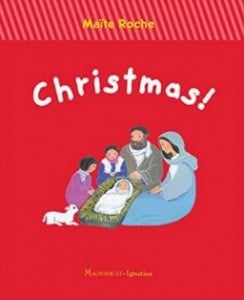 Ah, we Catholics love a party! And what is the liturgical calendar, if not a great excuse to put on our finery and enjoy a feast, celebrating the hallmarks of our faith with explosions of color and light and song!
Ah, we Catholics love a party! And what is the liturgical calendar, if not a great excuse to put on our finery and enjoy a feast, celebrating the hallmarks of our faith with explosions of color and light and song!
During the Christmas season, giddy with the news of the Christ Child’s birth, we decorate our churches and our homes with fragrant greenery, golden baubles, heady red poinsettias, and twinkling lights to rival the stars in the winter sky.
Likewise, Eastertide—when the liturgy reflects the glory of the Risen Christ, and our joy bursts forth in gold and white, in profusion of lilies and hyacinths and exuberant Alleluias. In our homes we color eggs, symbols of our new life in Christ, and conceal them behind plants and under tables where giggling children discover them, one by one, like tenets of our faith gradually revealed.
In the penitential seasons of Advent and Lent, resplendent in royal purple, we flaunt our expectancy.
And then it’s over, and we retreat into the sameness of Ordinary Time. Green, the color of earthly things and the color of hope, becomes our color of choice. But “ordinary” needn’t mean “usual” or “average” or “unimportant.” In the context of the liturgical year, “Ordinary Time” is time that is not seasonal—not marked by celebration of a great feast. During Ordinary Time, we plunge more deeply into our study of the life and mystery of Christ as proclaimed in the gospels of Matthew, Mark and Luke. Here we see the events of his daily life, we watch as he begins his public ministry and calls the apostles to be fishers of men. We soak up the wisdom and the grace, trying to become the salt of the earth, not hiding our light under a bushel. Christ leads us along the path to greater holiness (The law permits, but I say….), and in an overflowing compassion he heals every manner of illness and disease as he walks the dusty roads toward Jerusalem.
Back at home after the liturgy, we live our own “Ordinary Time” in our families and in our community. We put aside the trappings of the feast—boxing ornaments until next year, storing the fancy glassware and serving bowls and fine linens.
At first, after the gluttony of bows and packages and greenery and lights, our rooms appear stark and empty. As our eyes become attuned to the lower light, though, we once again appreciate the richness of little things: of jokes shared over the dinner dishes, and evenings splurged on backgammon and crafts; of shoulders huddled under warm afghans, and kisses stolen without benefit of mistletoe. Beef stew in the crockpot replaces boeuf bourguignon à la Julia Child, and we are none the worse for having only the warm, plain food of the everyday kitchen. It’s still Christmas in our hearts.














